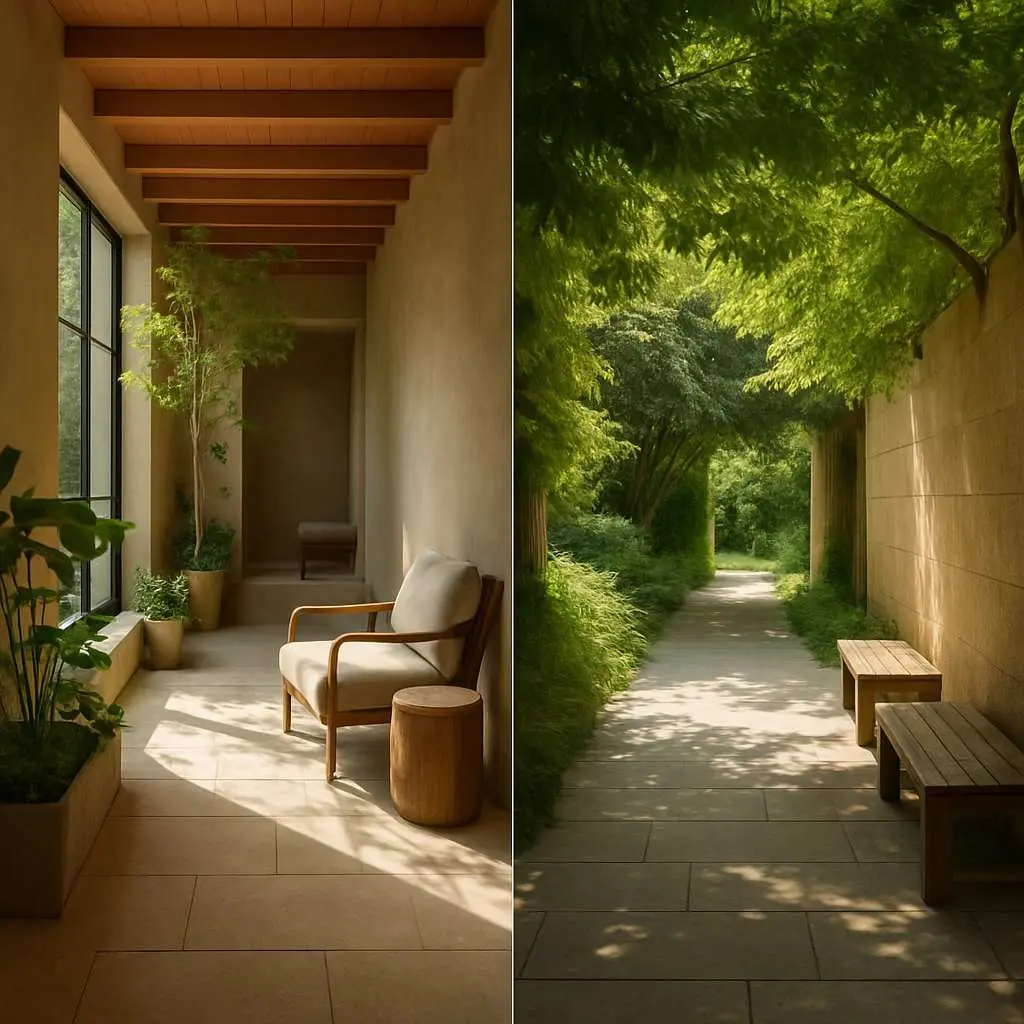As a design professional dedicated to creating reflective spaces, I’ve seen how brief interludes can enhance user experience. At Curvspace, we craft moments of pause that invite reflection amidst busy routines. In this article, discover how in-between time can be designed to rejuvenate and inspire. These brief interludes, often found in transitional spaces, are frequently overlooked yet hold immense potential for fostering well-being through reflective design. Crafting these moments of pause is central to our philosophy at Curvspace, aiming to transform mundane transitions into opportunities for mindful restoration.
Jump to:
The Unseen Potential of Brief Interludes
We navigate countless transitions every day. Moving from the street into a building, walking down a corridor, waiting for an elevator, stepping from a bustling office floor into a quiet meeting room – these are the “in-between” moments, the brief interludes in our daily choreography. Often dismissed as mere functional connectors or dead time, these transitional spaces are, in fact, potent opportunities for pause, reflection, and mental recalibration. Think about it: how often do you consciously register the design of a hallway or a waiting area, unless it’s poorly executed? Yet, these spaces subtly shape our experience, acting as psychological buffers that prepare us for what’s next.
At Curvspace, we see these brief interludes not as voids to be rushed through, but as canvases for reflective design. Imagine a corridor that doesn’t just lead you from A to B, but offers a moment of visual calm, or a lobby where the interplay of light and shadow invites a brief, mindful pause. These aren’t grand gestures, but subtle interventions designed to punctuate the relentless pace of modern life. The power lies in transforming these fleeting moments, these often unconscious transitions, into intentional moments of pause that can genuinely rejuvenate and inspire. It’s about recognizing the “genius of pause,” as Flad Architects puts it, and actively designing for it.
Transitional spaces are the connective tissue of our built environment. They guide our movement, manage flow, and establish spatial hierarchies, moving us from public to private, from noisy to quiet. But their role extends beyond mere functionality. They influence our emotional and psychological journey through a building. A grand, light-filled atrium can evoke awe and anticipation, while a dimly lit, narrow corridor might create unease. By consciously designing these spaces, we can guide not just physical movement, but also mental states, encouraging reflection and reducing anxiety. It’s about choreographing the experience, considering the sequence and rhythm of movement through space to evoke meaning beyond pure function.
Understanding the Need: The Psychology of Pause
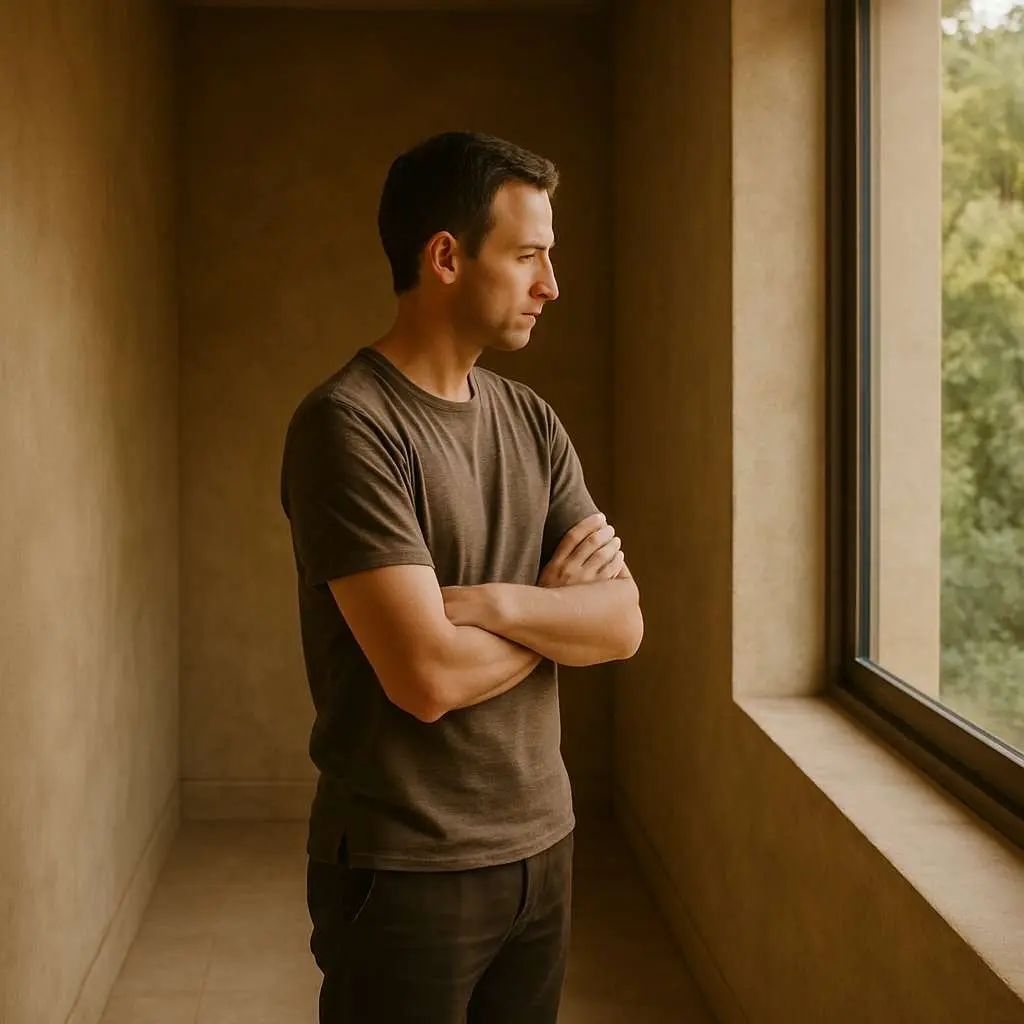
Why is carving out these moments for reflection so critical? In our hyper-connected, always-on world, the pressure to be constantly productive can be overwhelming. We rush from task to task, meeting to meeting, often feeling depleted and fragmented. The constant barrage of stimuli leaves little room for mental processing, creativity, or simply being. This is where the deliberate design of brief interludes comes in.
Taking moments to pause allows for a mental reset. It’s like hitting a refresh button for the brain, helping to clear mental clutter and transition more smoothly between different activities or mindsets. Research and anecdotal evidence suggest that even short breaks can significantly reduce stress and anxiety, improve focus, and boost cognitive function. Think of Einstein’s famous reflection: “I think 99 times and find nothing. I stop thinking, swim in silence, and the truth comes to me”. These moments of stillness, deliberately sought or serendipitously found in well-designed interludes, can be fertile ground for insight and creativity.
Mindful design principles actively support this need for pause. Mindfulness encourages present-moment awareness, and designing spaces that facilitate this can have a profound impact on well-being. A brief interlude designed for reflection acts as an invitation to reconnect with oneself, even for just a few seconds. Angeles Arrien beautifully captures this: “In the sweet territory of silence we touch the mystery. It’s the place of reflection and contemplation, and it’s the place where we can connect with the deep knowing, to the deep wisdom way”. By incorporating elements that gently draw attention to the present – the texture of a wall, the play of light, the sound of water – we can create restorative spaces that nurture this connection. These aren’t necessarily designated “meditation rooms,” though those have their place; rather, they are opportunities woven into the fabric of everyday spaces.
The goal isn’t to force reflection, but to create an environment where it can naturally arise. It’s about providing the opportunity for pause, a gentle nudge to step off the hamster wheel for a moment. These brief interludes can act as small sanctuaries, offering respite and allowing us to return to our tasks feeling more centered and resourceful. As Leonardo da Vinci noted, there’s strength in reflection: “I love those who can smile in trouble, who can gather strength from distress, and grow brave by reflection”. Designing spaces that support this inherent human capacity is a cornerstone of creating truly human-centered environments.
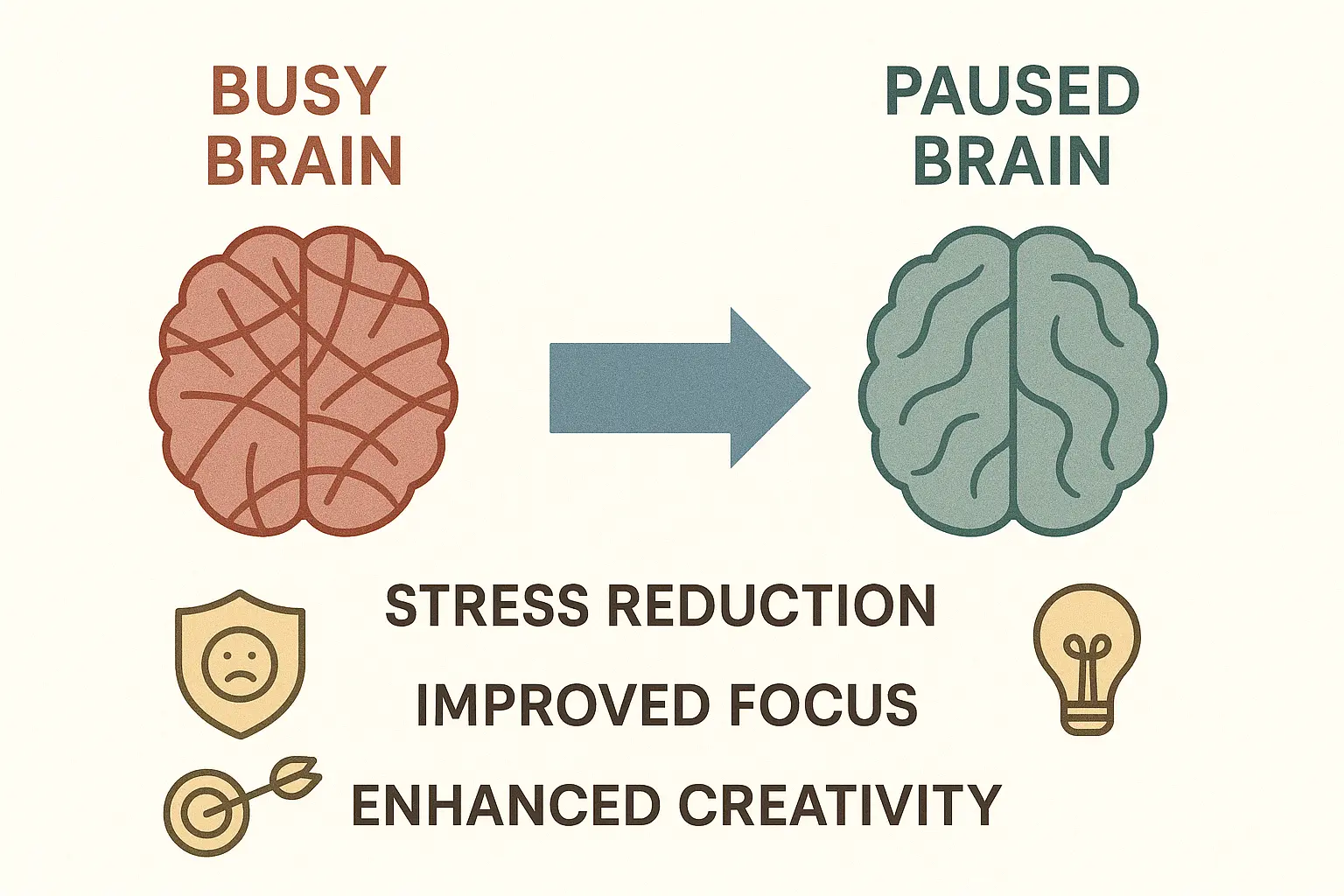
Reflective Design: Crafting Environments for Contemplation
So, how do we actually design these brief interludes to encourage reflection? This is where the principles of “Reflective Design” and “Mindful Design” come into play. Reflective design, as explored by Sengers et al., isn’t just about aesthetics; it’s a deeper approach that encourages both designers and users to question underlying assumptions and values embedded in technology and environments. It prompts us to think critically about how design shapes our experiences and behaviors.
Key Principles Guiding Reflective Interludes:
- Uncovering Assumptions: Reflective design pushes us, as designers, to examine the unconscious biases and values we bring to our work. For instance, designing transitional spaces purely for efficiency might overlook the human need for pause and sensory engagement. By reflecting on these assumptions, we can intentionally design for reflection, moving beyond mere functionality.
- Interpretive Flexibility: Rather than prescribing a single meaning or use, reflective design embraces ambiguity and open-endedness. A space designed with interpretive flexibility allows individuals to find their own meaning and engage with it on their own terms. This might involve using abstract art, intriguing textures, or layouts that invite curiosity rather than dictating a path. It’s about creating spaces that spark thought, not just direct movement.
- Giving License to Participate: While ambiguity can be powerful, it needs to be balanced with elements that make the space feel welcoming and accessible. Reflective design aims to make the familiar strange enough to provoke thought, but not so alienating that people disengage. This involves providing “footholds for interpretation,” perhaps through familiar materials used in novel ways or through clear, yet subtle, cues for interaction.
- Mindful Integration: Mindful design complements reflective design by focusing on elements that promote present-moment awareness and calm. This involves careful consideration of sensory experiences – light, sound, texture, scent – and how they contribute to a feeling of tranquility and connection.
Applying these principles means moving beyond designing transitional spaces as mere conduits. We start asking different questions: How can this corridor slow someone down, just for a moment? How can this waiting area offer a sense of refuge? How can the experience of moving between floors become an opportunity for a mental shift?.
It requires a shift in perspective, valuing the “in-between” not as wasted time, but as valuable time for human experience. It challenges the assumption that every square foot must have a directly productive or transactional purpose. Instead, we embrace the idea that designing for pause, for reflection, is a valuable function in itself, contributing significantly to overall well-being, creativity, and even productivity in the long run. Sidney Poitier’s reflection on his work resonates here: “I had chosen to use my work as a reflection of my values”. As designers, choosing to value reflection and well-being in our work fundamentally shapes the environments we create.
Strategies for Designing Moments of Pause
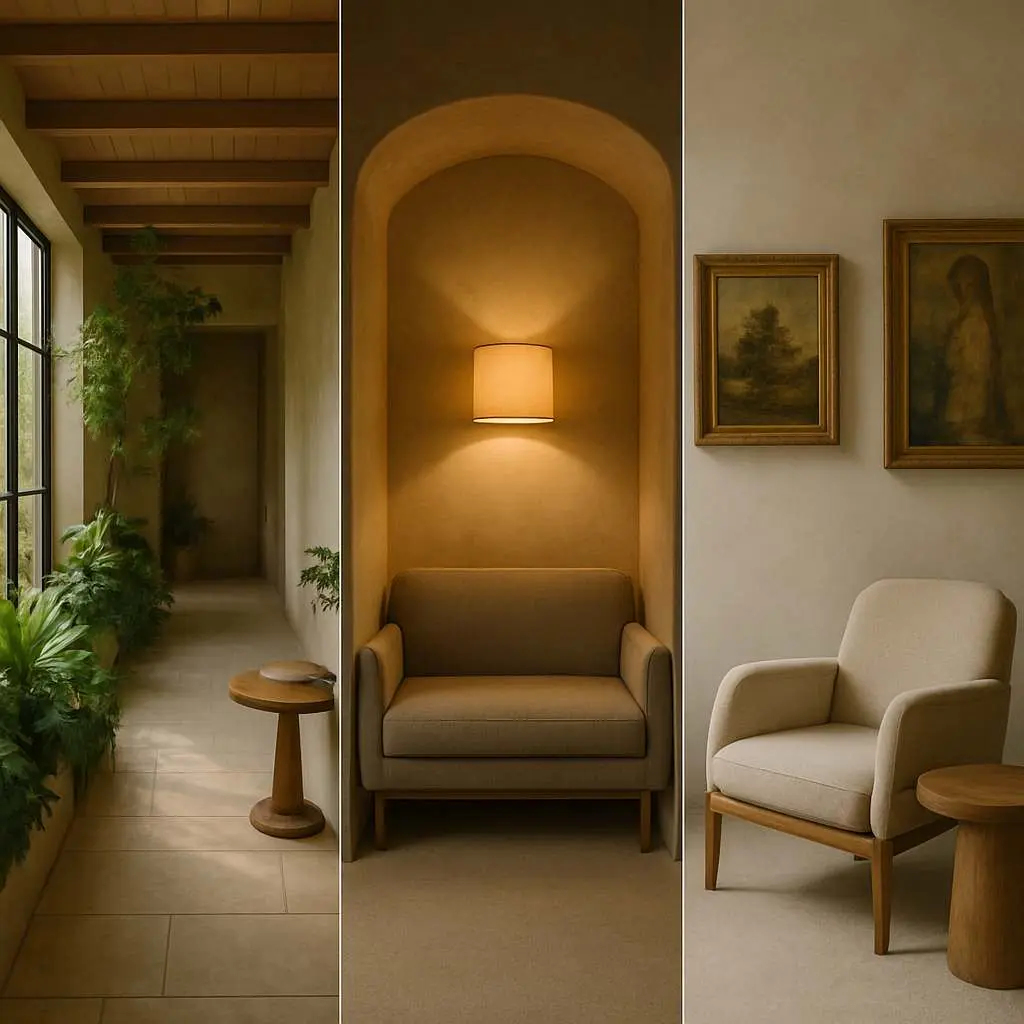
Translating these principles into tangible design requires a toolkit of strategies. At Curvspace, we draw upon various approaches, often blending them to create nuanced and effective brief interludes. These strategies focus on engaging the senses, connecting with nature, and shaping the spatial experience to encourage pause and reflection.
1. Embracing Biophilia: Nature as Restorative Agent
Our innate connection to nature, known as biophilia, is a powerful tool in designing for well-being. Integrating natural elements into transitional spaces can significantly reduce stress, improve mood, and enhance cognitive function.
- Greenery: Incorporating plants, whether through living walls, potted plants, or preserved greenery installations, brings life and visual softness to often sterile transitional zones. They also improve air quality.
- Natural Materials: Using wood, stone, bamboo, and other natural materials for floors, walls, or furniture adds warmth, texture, and a connection to the natural world. Exposure to wood, in particular, has been linked to increased focus and improved mood.
- Water Features: The gentle sound and visual movement of water can be incredibly calming and mask distracting background noise, creating a focal point for contemplation.
- Natural Light and Views: Maximizing natural light and providing views of outdoor greenery connects occupants to the rhythm of the day and the natural world outside, reducing feelings of confinement. Even simulated natural light patterns (circadian lighting) can be beneficial.
2. Sculpting with Light and Atmosphere
Lighting plays a crucial role in setting the mood and directing attention. Thoughtful lighting design can transform a purely functional space into one that invites pause.
- Soft, Diffused Light: Avoiding harsh glare and using indirect or diffused lighting sources creates a calmer, more comfortable environment.
- Warm Color Temperatures: Warmer light (more yellow/red tones) tends to feel more welcoming and relaxing than cool, blueish light, making it suitable for spaces intended for pause.
- Dynamic Lighting: Systems that mimic natural daylight patterns can support circadian rhythms and create subtle shifts in atmosphere throughout the day.
- Highlighting Features: Using light to draw attention to artwork, textural surfaces, or biophilic elements can create points of interest that encourage brief moments of observation.
3. Considering Comfort: Seating and Ergonomics
While transitional spaces aren’t typically destinations, providing opportunities for brief moments of rest can significantly enhance their restorative potential.
- Varied Seating: Offering a mix of seating options – benches along a corridor, comfortable chairs in a waiting nook, leaning rails – caters to different needs and durations of pause.
- Strategic Placement: Locating seating near windows with views, beside planting, or in quieter alcoves enhances the experience of rest.
- Ergonomics for Short Pauses: Even seating intended for brief use should be comfortable and support a relaxed posture.
4. Tuning the Acoustics: Soundscapes for Calm
Noise is a major stressor in many environments. Managing the acoustic landscape of transitional spaces is vital for creating a sense of calm and focus.
- Sound Absorption: Using materials like acoustic panels, carpets, upholstered furniture, and even dense planting helps absorb ambient noise, reducing reverberation and creating a quieter atmosphere.
- Sound Masking: Introducing subtle background sounds, such as white noise or nature sounds (like flowing water or birdsong), can mask more distracting or jarring noises.
- Quiet Zones: Designating certain areas within larger transitional spaces as explicit quiet zones can provide reliable spots for reflection.
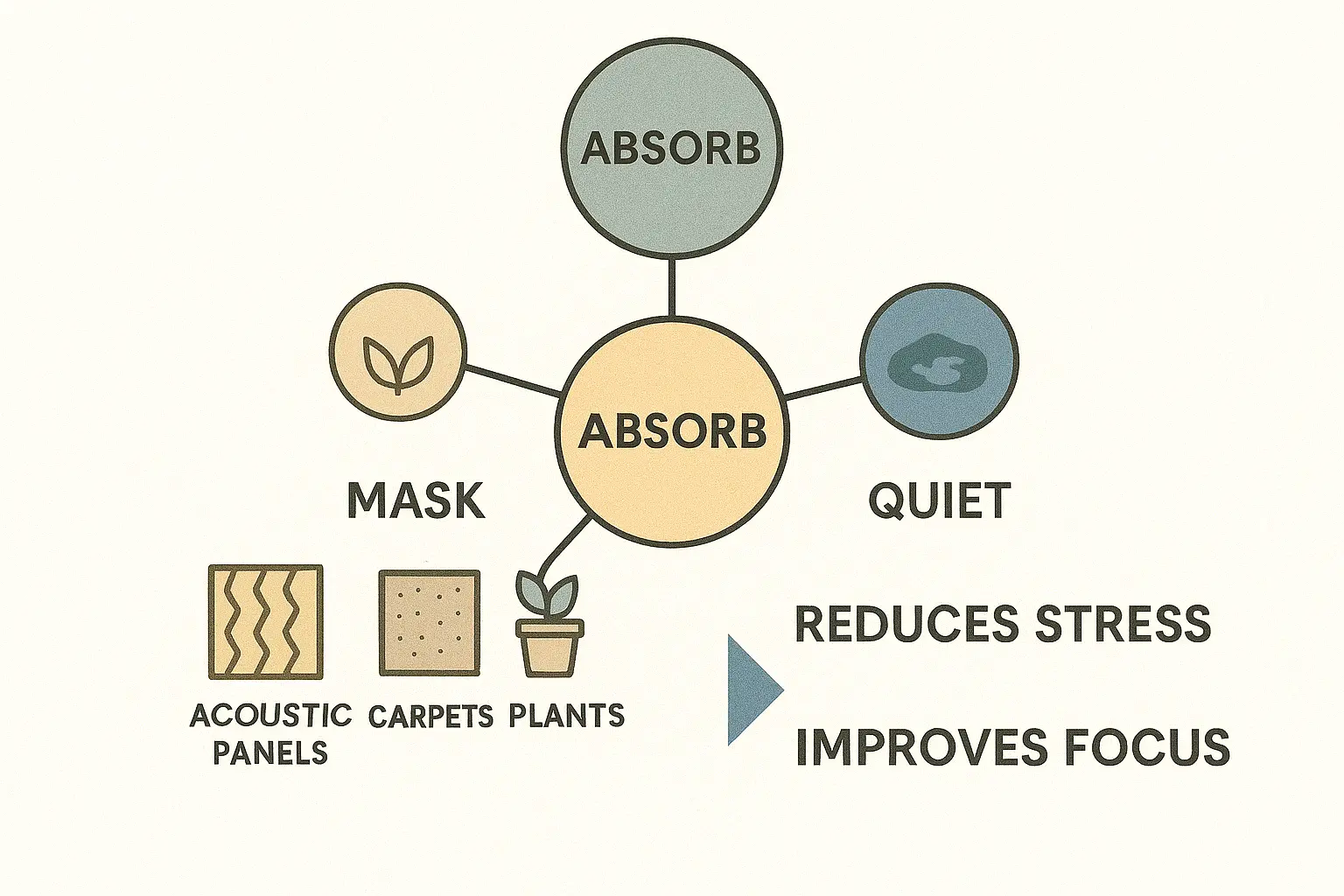
5. Engaging the Mind: Art, Visual Interest, and Discovery
Introducing elements that capture attention and spark curiosity can effectively encourage pause.
- Artwork: Thought-provoking sculptures, paintings, or rotating art installations can provide focal points for contemplation.
- Architectural Features: Interesting details, unique material combinations, or unexpected spatial configurations can invite closer inspection.
- Subtle Discoveries: Embedding small details to be discovered – patterns in the flooring, subtle shifts in texture, glimpses of hidden views – rewards mindful observation. Jason Santa Maria speaks of these design elements as “interludes” that maintain mood and punctuate the journey, like a chorus in a song.
6. Creating Multisensory Experiences
Reflection isn’t purely visual. Engaging multiple senses can create richer, more immersive moments of pause.
- Tactile Surfaces: Incorporating varied textures – smooth wood, rough stone, soft fabrics – invites touch and enhances sensory awareness.
- Subtle Scents: Using natural, non-intrusive scents from plants or carefully chosen diffusers can subtly influence mood (though this requires careful consideration to avoid sensitivities).
- Kinetic Elements: Gentle movement, such as mobiles, slowly changing digital displays, or the play of light and shadow, can be captivating and calming. Multi-sensory rooms in therapeutic settings often use combinations of light, sound, vibration, and comfortable textures to help individuals regulate emotions and connect with their senses.
These strategies aren’t mutually exclusive; the most effective brief interludes often layer several approaches. The key is intentionality – considering how each design choice contributes to the overall goal of creating opportunities for reflection and restoration within the flow of daily life. As Jared Spool noted, “Good design, when it’s done well, becomes invisible”. In the context of brief interludes, perhaps good design makes the opportunity for pause feel natural and effortless, even if the pause itself is a conscious choice.
Beyond the Physical: Digital Interludes and Future Directions
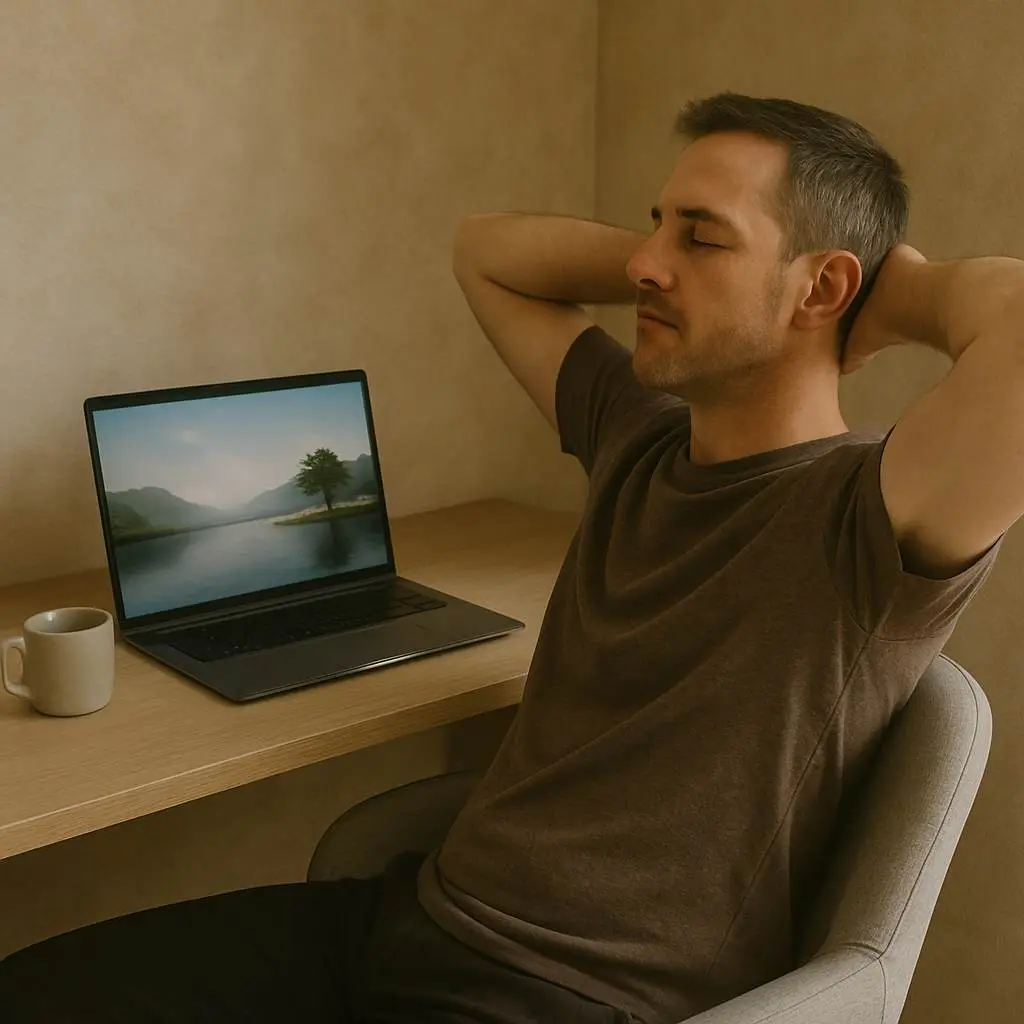
While much of our focus at Curvspace is on the physical built environment, the concept of designing brief interludes for reflection extends beyond architecture and interior design. In our increasingly digital lives, the need for moments of pause is just as critical, if not more so.
Think about the constant flow of information, notifications, and demands on our attention online. Where are the transitional spaces in our digital experiences? Can we design digital interfaces and workflows that incorporate moments for reflection? This might involve:
- Intentional Friction: Introducing small, deliberate pauses in digital processes – perhaps a brief moment before sending an important email or posting online – to encourage reflection.
- Digital “Transitional Spaces”: Creating virtual lobbies before online meetings, designing calming loading screens, or incorporating brief mindfulness prompts between tasks.
- Data Reflection: Designing interfaces for personal data (like health or time tracking apps) that encourage thoughtful reflection on patterns and behaviors, rather than just presenting raw numbers. Research in HCI explores various techniques, like temporal perspective tools or conversational agents, to support reflection through digital means.
The challenge lies in balancing efficiency with well-being. Just as physical transitional spaces are often optimized purely for speed of movement, digital experiences prioritize seamlessness and speed. However, as we recognize the detrimental effects of constant digital stimulation, there’s a growing interest in designing technology that respects human cognitive limits and supports mental well-being. Reflective design principles offer a valuable framework for exploring this, encouraging us to question the assumption that faster is always better.
Furthermore, the design of physical interludes can be enhanced by technology. Imagine transitional spaces with dynamically adjusting light and soundscapes based on occupancy levels or time of day, or interactive art installations that respond subtly to passersby. Multi-sensory rooms already leverage technology like LED lighting, projections, and synchronized sound and vibration to create immersive, calming experiences. The key is to use technology thoughtfully, ensuring it enhances the restorative quality of the space rather than adding another layer of distraction.
Looking ahead, the design of brief interludes – both physical and digital – will become increasingly important as we seek ways to navigate complexity and maintain well-being. It requires a holistic approach, considering the interplay between the physical environment, digital tools, and human psychology. It also necessitates a willingness to challenge conventional design practices that prioritize efficiency above all else. As Mark Twain wryly advised, “Whenever you find yourself on the side of the majority, it is time to pause and reflect”. Perhaps it’s time for the design professions to pause and reflect on the immense value of designing for pause itself.
What if corridors weren’t just passages, but invitations to breathe? What if waiting wasn’t wasted time, but an opportunity offered? By embracing the design of brief interludes, we can start to weave moments of reflection, restoration, and mindful presence into the very fabric of our daily lives, creating environments that truly support us as whole human beings.

People Also Ask
How can transitional spaces improve workplace productivity?
Transitional spaces in workplaces, when designed for pause, can provide brief mental breaks that allow employees to recharge and refocus between tasks or meetings. These moments of respite can lead to reduced stress, improved concentration, enhanced creativity, and ultimately, increased overall productivity and well-being.
What are some low-cost ways to create effective pause spaces?
Effective pause spaces don’t always require large budgets. Low-cost options include strategically placing existing furniture to create quieter nooks, using paint or rugs to visually define restorative zones, adding affordable potted plants for biophilic benefits, dimming lights where possible, playing calming nature sounds, and incorporating local art or photography.
How does the concept of designing for reflection apply beyond architecture?
The principles apply broadly. In UX/UI design, it involves creating intentional pauses or moments for consideration within digital workflows. In urban planning, it means designing public squares, parklets, or pathways that encourage lingering and observation. In education, it could mean structuring learning environments with physical or temporal spaces for quiet reflection between activities [17 – context of youth facilities]. It’s about recognizing the value of pause in any system or experience.
Conclusion
Designing brief interludes for reflection is more than an aesthetic choice; it’s a vital strategy for enhancing human experience in our fast-paced world. By thoughtfully crafting transitional spaces—those often-overlooked moments “in-between”—we create invaluable opportunities for pause, rejuvenation, and mindful presence. At Curvspace, we believe that embedding these moments of reflection into the everyday fabric of our environments fosters greater well-being, creativity, and connection. Let’s design spaces that don’t just move people, but also move within people.
Ready to transform your transitional spaces into meaningful moments? Contact Curvspace today to explore how reflective design can enhance your project.
References
- Sengers, P., Boehner, K., David, S., & Kaye, J. (2005). “Reflective Design.” Proceedings of the 4th decennial conference on Critical computing: between sense and sensibility, 49–58. [PDF]. Retrieved from https://nissenbaum.tech.cornell.edu/papers/reflectivedesign.pdf
- Santa Maria, J. (2014). “Interludes in Design.” Retrieved from https://v5.jasonsantamaria.com/articles/interludes-in-design/
- Zhang, Y., & Wang, Y. (2019). “Research on Transitional Shared Space Architecture Design.” Advances in Social Science, Education and Humanities Research, 313, 112–116. [PDF]. Retrieved from https://www.atlantis-press.com/article/125918862.pdf
- f square studio. (2021). “Curvilinear Space.” Retrieved from https://fsquarestudio.com/curvilinear-space
- Chan, W. M. H., & de Bont, C. (n.d.). “Mindfulness and Resource-Sensitive Design: A Literature Overview and an Agenda for Research.” [PDF]. Retrieved from https://www.designsociety.org/download-publication/39505/Mindfulness+and+resource-sensitive+design:+A+literature+overview+and+an+agenda+for+research
- Kumar, M. (n.d.). “Reflective Design Thinking.” San Francisco State University Faculty Sites. Retrieved from https://faculty.sfsu.edu/~mkumar/content/reflective-design-thinking-0
- Ayutt and Associates Design. (2021). “Interlude House / Ayutt and Associates design.” ArchDaily. Retrieved from https://www.archdaily.com/957149/interlude-house-ayutt-and-associates-design
- Stanton, R., Vaughan, L., & Yuille, J. (2013). “Exploring ‘reflective’ design: An approach to digital archives.” Nordic Design Research Conference. [PDF]. Retrieved from https://dl.designresearchsociety.org/cgi/viewcontent.cgi?article=1301&context=nordes
Disclosure
Our content is reader-supported. This means if you click on some of our links, then we may earn a commission. Commissions do not affect our editor’s opinions or evaluations. Learn more about our editorial process.

About the Editorial Staff
The Curvspace editorial team comprises a diverse group of experts on intermediate and threshold spaces in homes and workplaces. Architects and interior designers, civil engineers and artists, environmental and behavioral psychologists, sociologists and anthropologists. All collaborate to create helpful content, that explores the full potential of these often-overlooked areas to enhance our daily lives.

